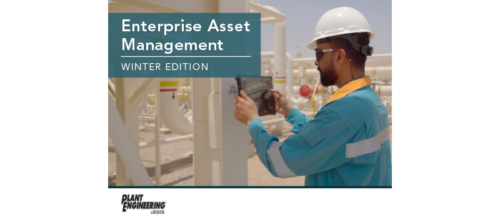Protecting the intangible assets on the plant floor
Look across any plant floor and you’ll see hundreds of assets your company finds valuable enough to insure. Machines, tools, employees – virtually anything within the plant – are worthy of protection. But what about what you don’t see? It’s what you don’t know about what’s going on across the plant floor that can hurt you, and that’s made asset ma...
Look across any plant floor and you’ll see hundreds of assets your company finds valuable enough to insure. Machines, tools, employees — virtually anything within the plant — are worthy of protection.
But what about what you don’t see?
It’s what you don’t know about what’s going on across the plant floor that can hurt you, and that’s made asset management a cornerstone of productive (and safe) plant management. But asset management, needs to be administered with a real, tangible solution: asset management software that goes beyond managing assets to actually help protect them.
The asset of intellect
What is it that allows you to do what you do better than anyone else? Time is money, and hundreds of thousands of man-hours can be spent creating an application process or procedure that allows managers to operate their plant more efficiently than the competition. In many ways, it is the most important, and often most lucrative, investment a manufacturer can make.
Yet this valuable body of knowledge often goes largely unprotected, in part because of its intangibility. The loss of an advantage — the disclosure of knowledge that only you previously had — doesn’t register as a possibility. Even when it does, you don’t think it can happen to you.
Costly errors in judgment
It can happen to you — and it may not even be malicious. Even the most reliable electronic devices can be susceptible to electronic noise and lose memory, resulting in an entire program being lost.
Many manufacturers still employ manual change control or backup processes that involve burning a CD or making a copy of a floppy disc and tossing it into a file cabinet. But what if either are misplaced? Tracking changes manually in a log book or a configuration file also is still popular but lacks consistency, and it often becomes less thorough over time. What if the log book does not contain the information users have inherently relied on?
Theft can also be a concern, as can simple misappropriation or a wide range of factors that leave the intangible unprotected. Intellectual property is critical to the company’s success, and that makes a critical approach to its protection a definitive necessity.
This is where asset management software comes in — delivering value to managers in tangible ways. Not only can some programs help decrease downtime to boost the bottom line, they also can deliver returns by insuring those intangible assets, by increasing security, allowing system recovery and providing an audit trail. Asset management software should be able to help protect intellectual property in four key areas — version control, audit trail development, security and back-up recovery.
The key areas
An asset management software application should be able to automatically deposit application versions into a source-control repository. After a user makes changes, the software should independently archive the newest version using incremental version numbering for the sake of clarity. The program also should save the entire stream of changes, archiving as many versions as the hard drive will hold. The result is improved clarity regarding selecting a version and determining which form is which, ultimately making it much more difficult for a user to select the wrong version.
When a manager is on the brink of losing something as valuable as intellectual property, a whole host of questions can surface. How and why it happened are often the first two queries, and answers to those questions are often difficult to find.
Asset management software can record users’ actions and generate a real-time audit trail that tracks user, device, computer, time and action taken. Each authorized user is held accountable for each change they make, and the ability to track the source of problems is not defined by the level of detail taken down in a log book.
Reducing unauthorized system access is a key component of asset management as it relates to intellectual property. The appropriate asset management software controls and records authorized user actions, which means you not only know who is making what changes and when, you also dictate who can make what changes before they are made.
Much like version control, backup recovery is an essential means to protecting intellectual property through clarity of your system. Asset management software should provide automatic backup or backup-and-compare features to allow managers to view and analyze all changes that have been made to equipment on the plant floor through comparison to a master file kept in the system’s archive.
Intangible assets, tangible financial sense
It is easy to get caught in the paradox many managers find themselves in: struggling to determine the economic wisdom of protecting assets they can’t see. It takes a tremendous amount of foresight and the ability to understand the value of problem prevention. Once those investments are put in danger, the need for better asset management becomes evident quite quickly.
One manufacturer recently absorbed a loss of more than $100,000 because of downtime expenses after an unknown individual made a change in the timing of an automated grease system. A timer used to inject grease every 20 minutes was modified to inject grease, instead, once every eight hours. That company quickly realized the need for asset management software and today has implemented an asset management system with user privileges that help prevent unauthorized changes. An audit log function provides detailed information about each system change.
As factories become more complex, the plant floor becomes an even more valuable commodity. This increases the need for a more reliable, manageable method of protecting intellectual property assets. With asset management software, the intangible stands a much better prospect of being protected.
| Author Information |
| Tad Palus is a product manager at Rockwell Automation. |
Do you have experience and expertise with the topics mentioned in this content? You should consider contributing to our CFE Media editorial team and getting the recognition you and your company deserve. Click here to start this process.



